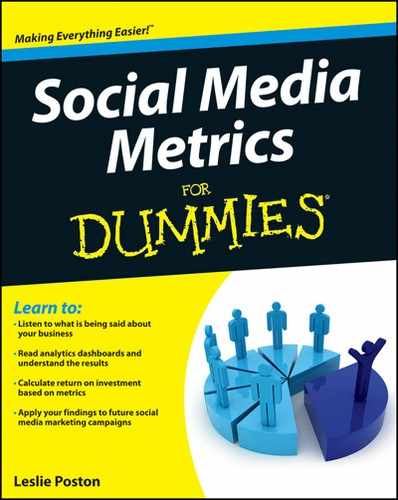Identifying What Else You Can Measure
If you’re wondering what else you can measure, just think outside the box. You hear this phrase all the time, but what does it mean for metrics? It means thinking of ways to measure the unmeasurable and better ways to track the typical metrics.
However you decide to think out of the box, make sure that you keep track of the unusual or intangible metrics you start to measure. These metrics may not plug easily in to your analytics reports, but they’re invaluable tools in the sales process and marketing decision-making process.
Out-of-the-box measurements
If you put your mind to it, you can measure anything — some metrics are just harder to achieve and require more self-identification from the customer. Take yellow pages ads and billboards, for example.
Those rely on the customers indicating that they heard of your business through those mediums. That reliance on the customer means thinking outside the box and adding a layer of self-identification and tracking to the time between seeing the ad and making the call or stopping in.
Here are a few examples of thinking outside the box:
![]() Can you add a QR Code to a poster with a reward for scanning it? You can track QR Codes, as well as the reward use, which gives you even more data.
Can you add a QR Code to a poster with a reward for scanning it? You can track QR Codes, as well as the reward use, which gives you even more data.
![]() Can you add a simple call-to-action to your billboard? “Tell us you saw us on Highway 9” will encourage the customer to self-identify, though adding an element of play or reward to it would net better results. For example, having someone check in to the billboard on foursquare or Facebook would be a fun way to snag those eyeballs in a way you can track.
Can you add a simple call-to-action to your billboard? “Tell us you saw us on Highway 9” will encourage the customer to self-identify, though adding an element of play or reward to it would net better results. For example, having someone check in to the billboard on foursquare or Facebook would be a fun way to snag those eyeballs in a way you can track.
![]() If you’re on the radio, take live questions on Twitter or have a live chat open on your website that you check during the show. Catch your listeners, track them, and engage them outside of their speakers.
If you’re on the radio, take live questions on Twitter or have a live chat open on your website that you check during the show. Catch your listeners, track them, and engage them outside of their speakers.
![]() If you have a radio ad, include your website, include a hashtag, and drive people to your site and your social sites where you can see how they use your product or engage your brand.
If you have a radio ad, include your website, include a hashtag, and drive people to your site and your social sites where you can see how they use your product or engage your brand.
Another metric that can help your business grow is customer feedback. Listen and measure customer suggestions and feature requests for your product. Your customers are talking to and about you and telling you what they want and need your product or service to do constantly on social media.
By listening to your customers, you can scale out new features quickly and continually and meet their needs in a timely fashion. This practice will help you with customer loyalty and customer satisfaction as well as customer acquisition.
Conversation about your brand
Paying attention to how much of the conversation is about your brand or a feature of your brand in your vertical is another key metric to track. For example, Toyota and Honda tend to dominate customer conversation online in the automotive vertical when it comes to discussions about price, but when it comes to conversations about family and brakes, it swings to Ford and Toyota instead.
Knowing where your strengths are in metrics related to your vertical tell you what you need to address for your brand. Ford may not want to compete in customer conversations on price, but if it did, it knows it’s third in customer conversation for that metric and can work on it.
Resale cycles and values
Other unusual metrics to track include your products’ resale cycles — the concept that a product is passed along through resale after a certain amount of time rather than kept until it has lived its product life span. Honda, for example, is a popular car in part because of its well-known resale value. Apple computers hold their value as well.
Resale value is another metric that helps you define the value people place on your product and how well it holds up over time. Resale value isn’t a metric you can track in Google Analytics (well, actually, with the new product metric inside AdWords, and AdWords linking to Analytics, maybe you can soon), but it’s one to pay attention to.

 Some metrics you simply make a note of, pay attention to, and check regularly. They help judge some of the intangible values around your brand. Others you track in great detail via links, codes, landing pages, and other online metrics. Both hold value. Both integrate with each other well.
Some metrics you simply make a note of, pay attention to, and check regularly. They help judge some of the intangible values around your brand. Others you track in great detail via links, codes, landing pages, and other online metrics. Both hold value. Both integrate with each other well.